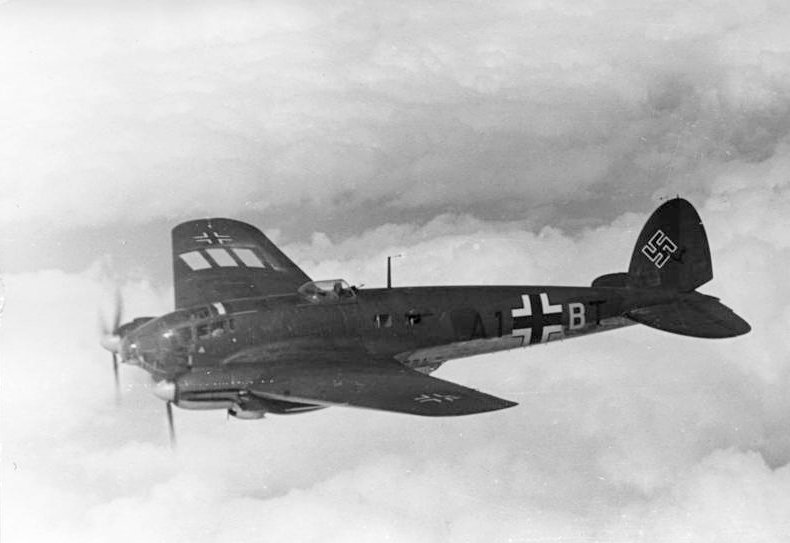The German Air Industry was a gigantic bureaucracy. By terms of the Treaty of Versailles, the air industry was permitted to build commercial airplanes, while they covertly maintained designing sections for combat planes and attempted to keep these designs abreast of those of foreign powers.
A Heinkel He 111H of Kampfgeschwader
The assistant air attache in Germany was Captain Theodore Koenig whom Smith worked closely with. The only combat squadrons, which were composed of obsolete planes, consisted of Junkers (JU) 52 light bombers and fighters which were either Heinkel (HE) 51’s or Arado (AR) 55’s. Germany had also been divided territorially into five air command areas, known as “Luftkreise”. There was also a sixth non-territorial but comprised all those air units which were being organized to support the Navy.
ME-264 Prototype bomber flight
The strength of German air power attained by November 1, 1937, was dependent on four factors: (1) the efficiency of its aeronautical science; (2) the capacity of its aircraft and aircraft motor industry; (3) the performance of its combat planes; and (4) the training level attained by its personnel.
This was all reported to the American government by Smith and his office in Berlin, however his findings were reported to the American people by the press, who made him out to be a sympathizer and a defeatist. Smith described the Luftwaffe as rapidly growing in strength, and this was not the perception the media wanted to propagate.
Click here to continue

